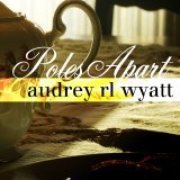Corey G.
Yelp
Our mobile personal electromagnetic-wave detectors (i.e. our eyes) see a sky of peace & chill, but our eyes only see a teeny tiny section (400-800nanometer waves) of the big picture. There are tons of other waves invisible to us. And when you get to big waves (a few millimeters to many kilometers), these waves paint the night sky as a head-banging, violent, and vibrant show of activity.
This is the type of show the Very Large Array (VLA) has front row seats to 24 hours a day.
In the dry, desolate, and beautiful desert of New Mexico sits the VLA. The Goliath 27 antennas which make up the VLA sit in big triangular formation. All the antennas sit atop a train car like structure, and each antenna can be moved along a "train" track to reconfigure the antenna. So, what you have here is a huge zoom radio lens. When the antennas are spread out the farthest (arms are ~13miles long), you are zoomed in to a section of sky & have a high resolution and can see intimate details of what you're looking at. When the antennas are bunched up together, you are in a "wide lens" setting and can see a much bigger picture of the sky.
Enough technicality, it's just cool.
The VLA is a cool engineering feat to just drive by and see. And if you are in the area, you have to check out the Visitor Center and take a self-guided tour of the facility. The Visitor Center has many exhibits about radio astronomy, the VLA, and some of their observations. There is also a theater which plays a short film about the site. My favorite part of the Visitor Center was the gift shop. Whether you want a nerdy and cool T-shirt, or a "Very Large Shot" glass, you will have tons of cool gift options here. The staff were also very nice and friendly. It seems like the exhibits are a bit dated, but this place has been around for a while, and I wondered about how much traffic they got here---I was the only visitor the entire time I was here.
Now, you should also take tour. They have guided tours on the first Saturday of each month, but if you can't make that, you can also take a self-guided tour. I took the latter, and was under a time constraint, but I was able to walk to a few outdoor exhibits, walk very close to one of the antennas, and then walk around the Control Room Building.
One thing I regretted not seeing, was the beautiful canyon next to the VLA---y'know, the one Jodie Foster's character sat near with the huge antenna's in the background. If you are looking for the same canyon---tough luck! That was all CGI-ed in there! Yup, in the movie Contact, they imported the breathtaking Canyon de Chelly from Arizona to help spice up the scenery (read my review: http://www.yelp.com/biz/canyon-de-chelly-national-monument-chinle#hrid:5NjqvBuX1wQ1EpPLv0oEtw).
But it's ok, the VLA will take your breath away scientifically.
[Google Map note: The location of this place must be for an office in Socorro, and not the actual observatory in the desert an hour west.]











































